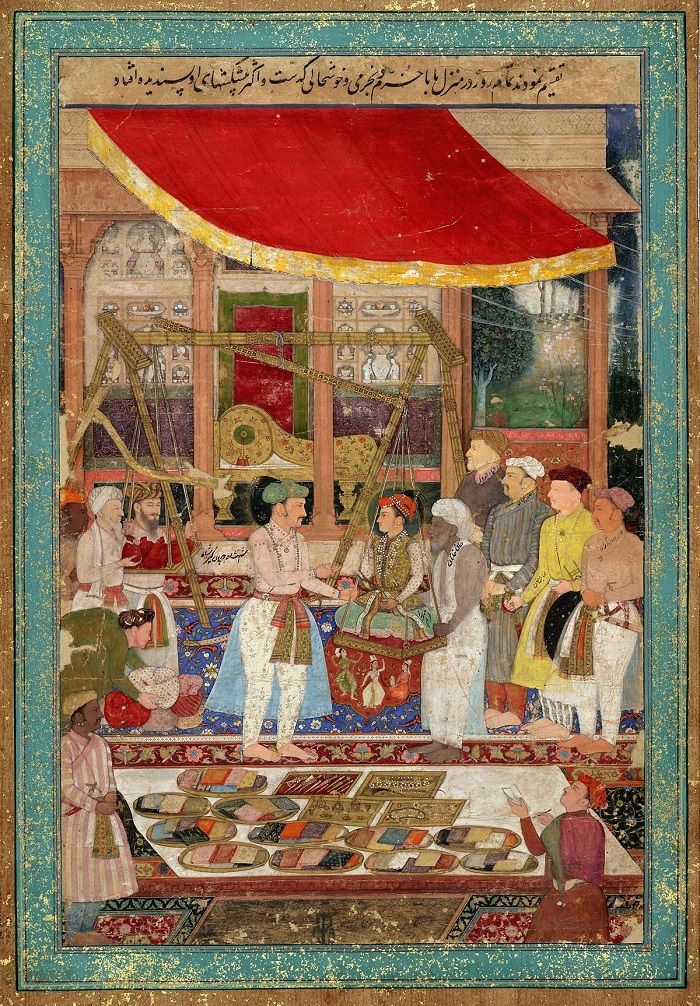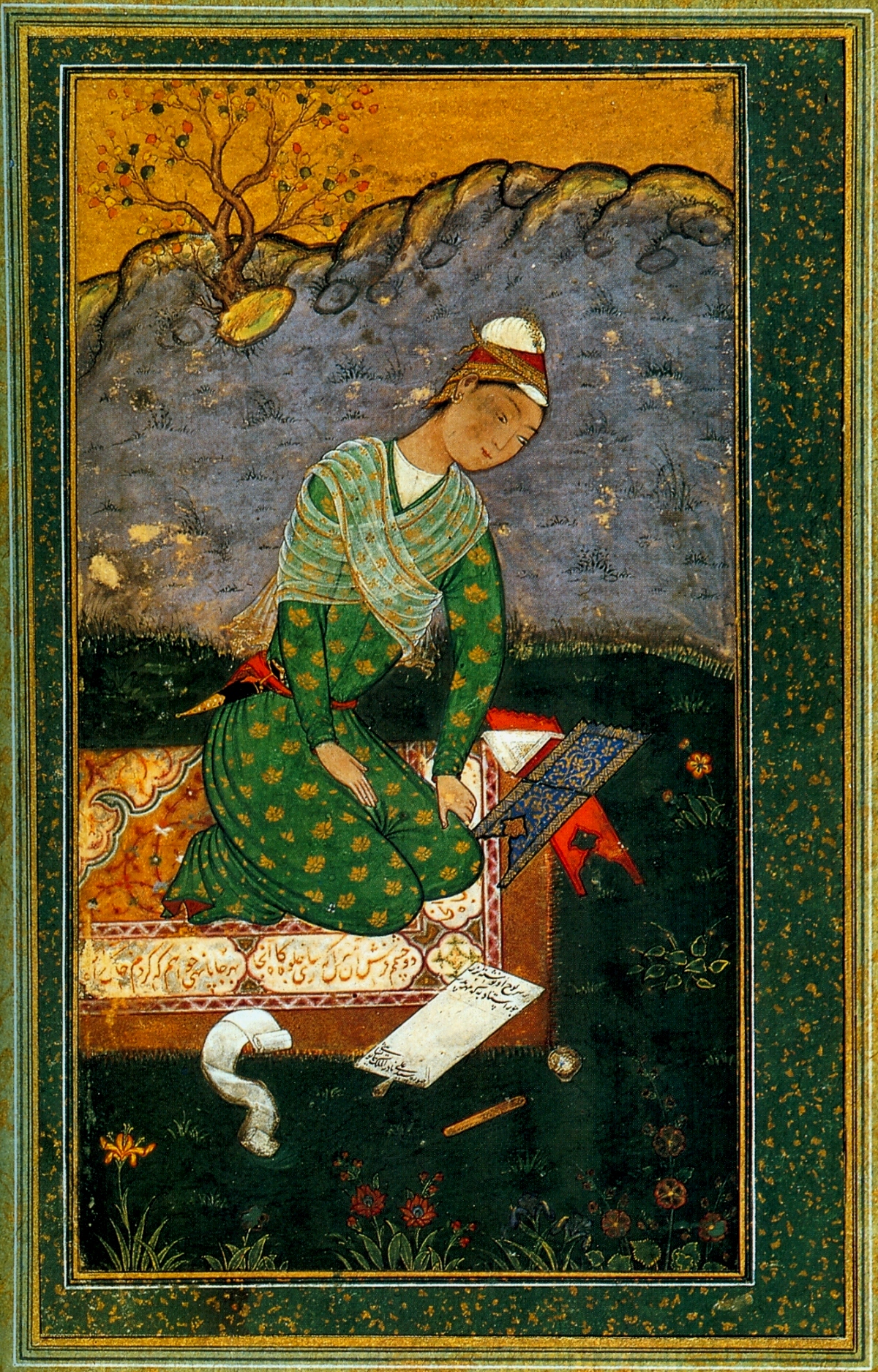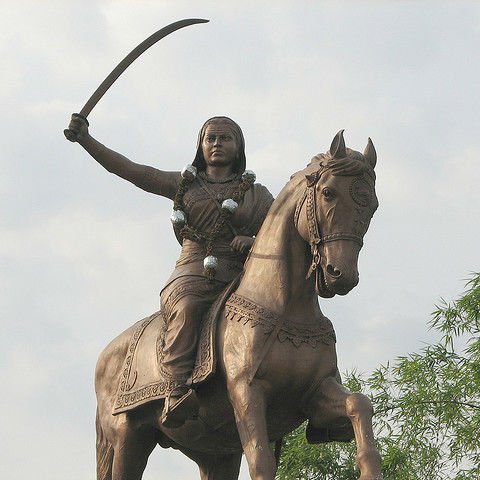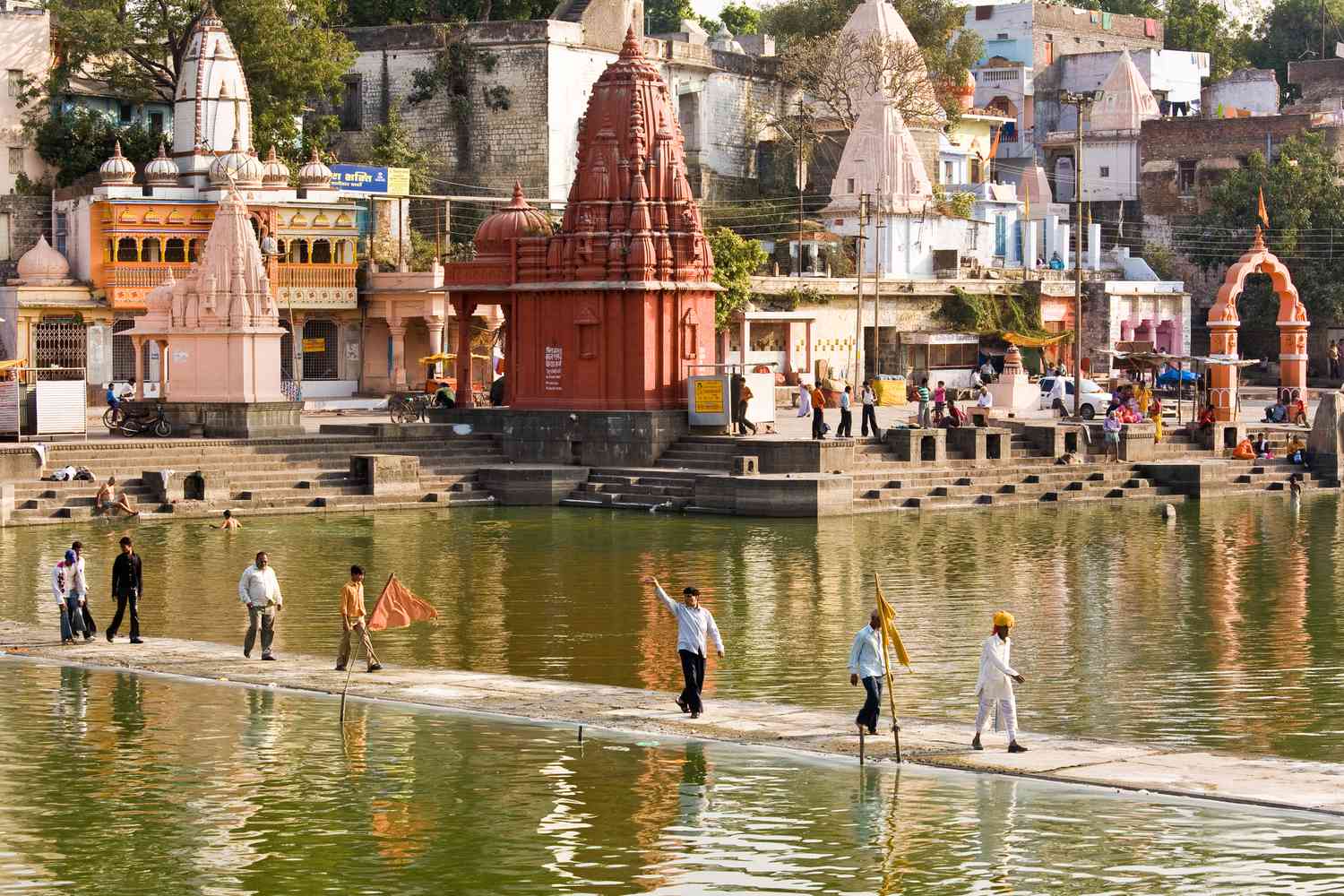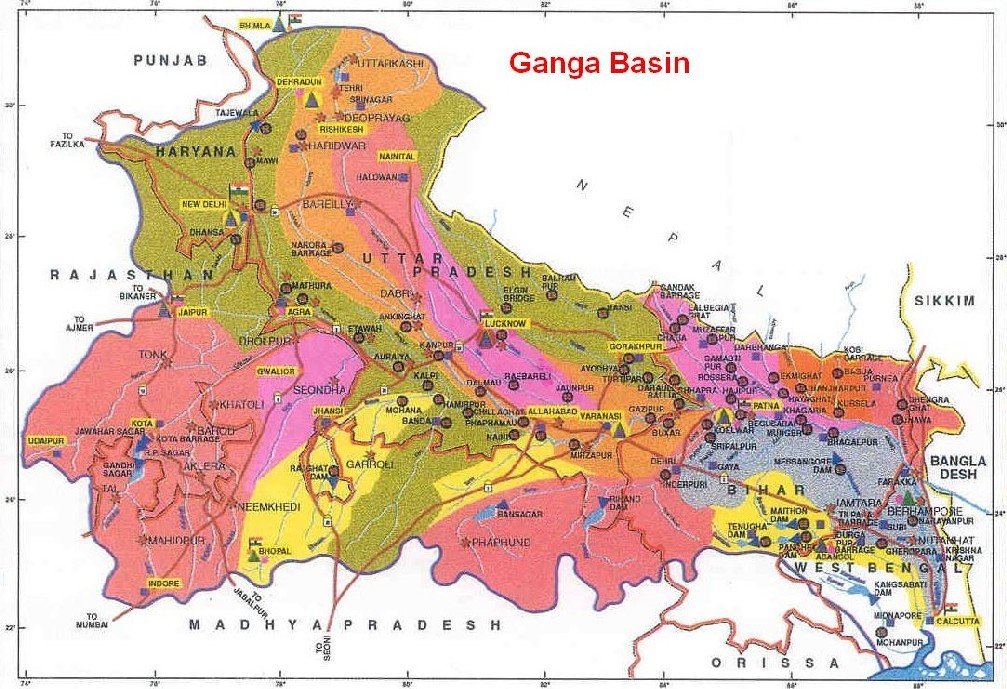- Home
- Indian Paintings
- Mughal Painting
Mughal Painting
Mughal paintings evolved from the Persian school of paintings and were
usually made as miniature paintings either as book illustrations or single work. Mughals were not only good rulers but were also famous for paintings,
art and architecture. The monuments built during Mughal period are world famous
even to this date. The best example is Taj Mahal. Similarly Mughals were famous
even for the paintings and clothing.
Mughal
paintings became famous during Mughal period around 16th to 18th
century. It can be said that the Mughal paintings were in collaboration of
Persian and Indian painters. Mughals can be given full credit for spreading the
Islam art and architecture and also the faith across South Asia.
Mughal
paintings became much better and bigger than the Persian paintings. Animal,
plants, victory in the war, hunting scenes, royal life, mythological stories
etc were some of the main themes in the paintings. The Mughal paintings spread
to other Indian courts of Hindus, Sikh rulers as well.
Origin and History of Mughal Painting
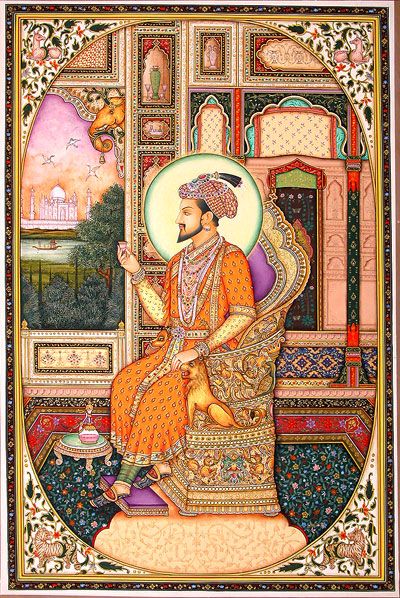
Miniature paintings were not new to India. It was already present in
India since 10th century. The miniature paintings also flourished
during Delhi Sultanate period. Even though Babur is the Founder of the vast
Mughal Empire but nothing is found about the miniature paintings during his
period even in his autobiography Baburnama.
The
actual foundation laid to Mughal Painting was by Humayun during his period. After
Humayun returned from exile he was accompanied by two Persian artists Mir
Sayyid Ali and Abd al-Samad. These two artists created many beautiful paintings
including Khamsa of Nizami which had 36 illuminated pages which has different
styles of various artists.
There
are not many Mughal Paintings during Humayun’s period. One of the famous
painting which he commissioned during his exile was the Princess if House of
Timur which is now in British museum. The Mughal paintings flourished mainly
during the period of Akbar, Jahangir and Shah Jahan. After the death of Humayun
his son Akbar further carried and expanded Mughal art and architecture along
with many paintings.
Mughal Painting under Akbar
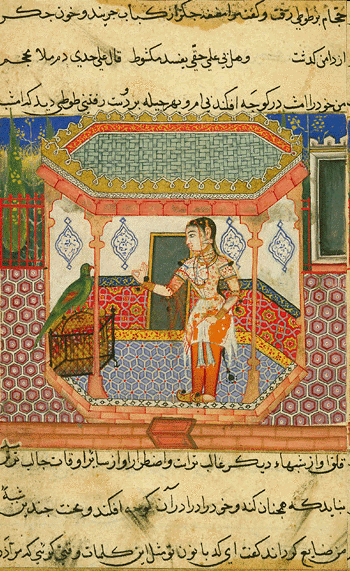
Mughal
painting further improved and flourished during Akbar period. It became more
Indianized. Since his childhood Akbar had very interest in the art and culture.
He learnt about painting under the guidance of Abd-as-Samad. He encouraged art
and culture during his reign and there were many painters during his period.
Between 1560 -1570 he commissioned a number of paintings.
One
of the famous paintings which Akbar commissioned was “Tutinama” which means
“tales of Parrot”. Tutinama is a 14th century Persian stories of 52
stories. It contained 250 miniature paintings. It took almost five years to
complete the paintings by Mir Sayyid Ali and Abdus Sammad. Tutinama is
presently kept in Cleveland museum of Art in Ohio
Another
major work which was commissioned by Akbar was Hamzanama. It narrates about the
legendary of Amir Hamza. Akbar had enjoyed these stories during his childhood
and hence he ordered the court to recreate Hamzanama. Most of the characters in
this were fictitious and it had 46 volumes with 4800 pages. It also included
1400 pages of Mughal paintings that were larger in size. Mir Sayyid Ali and
Abdus Sammad supervised the work which included around 30 senior artists and
around 100’s of men worked in different aspects.
Some
of the other important works during Akbar period include Gulisthan which was
commissioned at Fatehpur Sikri in the year 1582, A Darab Nama, the Khamsa of
Nizamiand Jami’s Baharisthan. Akbar also helped around 100 of painters to
practice Mughal painting.
Mughal Painting under Jahangir
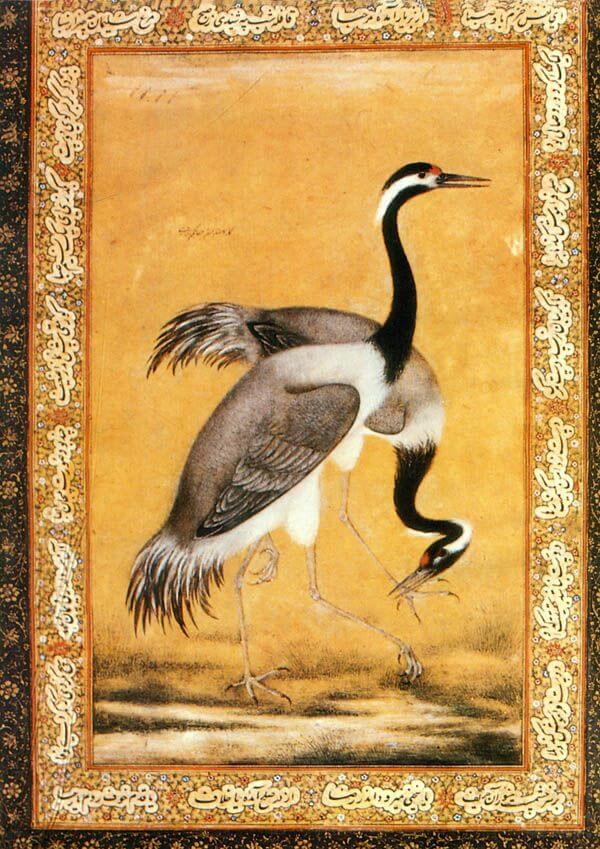
Mughal
paintings got further boost during Jahangir’s period. The paintings got further
improved and the brush work got thinner with light colours. Jahangir was
influenced by the British art and European paintings hence he ordered for
single point perspective which was used by European artists. Jahangir had great
interest and fascination towards nature and animals.
Most
of the paintings during his period included portraits of his life, birds,
animals and flowers. One of the best examples is the portrait of Jahangir who
is holding a picture of Virgin Mary. The
major painting commissioned during his period was Jahangirnameh. It was a poem
written during his life time about his on Rostam. It was written in Persian
Language and had 3600 couplets. It had several paintings which included union
of saint and tigress and also fight between two spiders.
Ustad
Mansur was the famous painter in the court of Jahangir who did beautiful
paintings of plants and animals. He gained the title of ustad during the end
reign of Akbar. Bishandas was another important painter in Jahangir’s court.
Not much is known about this great painter however it is understood that he was
a Hindu. In 1613, Bishandas travelled to Persia to do painting of Shah’s
portrait.
Mughal Painting under Shah Jahan
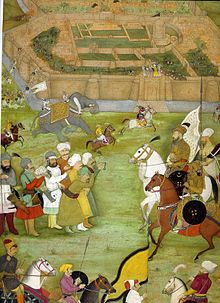
Shah
Jahan had not only interest in architecture but also had lot of interest in
painting. The world famous Taj Mahal was built during his period to his wife
Mumtaz Mahal. The paintings during his
period became more rigid and formal. Most of the themes of the paintings were
garden or nature. It also had lovers in intimate position and musical parties.
The Mughal paintings further grew and became more refined during Shah Jahan
period.
The
most important work that was commissioned during his period is known as
“Padshanama”. It is a contemporary chronicle which was commissioned by Mughal
Emperor Shah Jahan. Padshanama contained several paintings explaining the
achievements of the king. It had beautiful portraits of even the courtiers, king’s
servants.
The
paintings were so clear and neat that even minute details could be identified.
However the paintings of the king and nobles were adhere to strict profile and
principles. The servants and the other court officials were painted in front view
technique or method. The paintings were very grand and golden colour paint was
the most used paint. Under Shah Jahan period both the architecture and
paintings grew immensely. Many of the paintings during his period are kept in
various museums.
Mughal Painting under Aurangzeb
Aurangzeb
neither encouraged nor further developed the Mughal Paintings during his
period. As already the Mughal Paintings had got huge support and encouragement
from public it did not affect much without Aurangzeb support. But it is
believed that some of the best paintings were done during his period. It is
understood and believed that during his period Aurangzeb would order for
closure of all the workshops so all the painters worked hard and did some of
the best paintings.
Mughal Paintin
After a slight fall of Mughal Paintings during Aurangzeb period again it regained during Muhammad Shah period. He encouraged artists like Nidha Mal and Chitraman to do some best paintings. The best painting during his period was Rangeela.
But
the Mughal painting lost its charm and glory. Many other Indian Paintings had
developed by that time. But with the arrival of British East India Company all
the Indian paintings got influenced with the Western Paintings.
Some prominent painters during Mughal Period
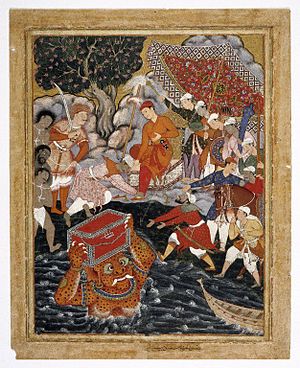
Basawan: He flourished between1580-1600.
He was the famous miniature painter during Mughal period and became the court
painter during Akbar rule. Very little is known about him. He has contributed
to more than 100 paintings and some of the great works are illustrations for
the Raznama, Akbar-nama, Darab-nama and the Timur-nama. He was one of the first
Indian artists to be interested in western art and its technique.
Manohar Das:
He
was the son of Basawan who was a noted painter during Akbar time. Some of his
great paintings are kept in British museum and Victoria and Albert Museum. He
was in both Akbar and Jahangir court.
Govardhan:
He was the son of Bhavani Das who was also a great painter. Govardhan worked under three rulers Akbar, Jahangir and Shah Jahan. He was one of the illustrators in Baburnama which is currently located in British museum.
Other
than these there were many other important painters like Miskin, Lal along with
Mir Sayyid Ali and Abd al-Samad. Mughal paintings are still being created and are
still passed from one generation to another.
Check out for other pages
Update on coronavirus in India
Affiliate Disclosure:
If you make any purchase via a link on this site, I may receive a small commission with no added cost to you.
